How to grow strawberries: expert tips on growing this summertime treat
Learn how to grow strawberries in your garden for a delicious supply of sweet, juicy fruit

Holly Crossley

Learning how to grow strawberries in your outside space is so worthwhile. After all, who doesn't want a steady supply of these juicy fruits during the summer months?
Whether growing them in raised garden beds or containers, they're sure to delight all the family. But preparation is key with this crop, which means planting them in the right place, at the right time. There are also a few pesky problems that these crops can encounter, but these can be prevented with a bit of know-how.
We've rounded up all the expert tips you need on how to grow strawberries so you can enjoy a delicious harvest when warmer weather arrives.
How to grow strawberries in 6 steps
Learning how to grow strawberries is simple, whether you opt for summer-fruiting varieties (which bear the largest berries) or perpetual (which have smaller fruits but crop for longer).
Just follow these steps:
- Prepare the ground by turning plenty of compost through the soil.
- Plant your strawberry plants or runners so the roots are just below the surface, but not too close to the next plant. Strawberries like to spread out, so keep them at least a foot apart.
- Water them lots as they're growing. If they're in planters, make sure the planter drains well. Avoid watering the fruit and the crown of the plant.
- If they're in beds, add straw around the base of the plants, as this will help them steer clear of slugs and snails.
- The plants will flower, and eventually those flowers will bear fruit – usually within 60 days.
- Cut off the old foliage to about 4in/10cm above the crown after cropping has finished to allow the new leaves to come through.

When to plant strawberries
If you're growing your strawberries in the ground or in raised beds, start digging compost into your soil to prepare it for planting from late winter.
The month you plant your strawberries can depend on the variety, so always check when you buy.
As a general rule, though, bare-root runners need to be planted in early spring or late autumn. If you opt for early spring, just ensure the last of the frosts is over.
Potted strawberry plants are usually available in spring and these can generally be planted when you buy them. Meanwhile, cold-stored runners can be planted at the end of spring or even as late as early summer.

Where to grow strawberries
Strawberries do best somewhere with sun and shelter, in soil types that are fertile with good drainage. So, if you have clay or waterlogged soil, you'll need to use raised beds or grow bags.
And don't worry if you don't have space for a fully-fledged kitchen garden – you can successfully grow strawberries in containers or even hanging baskets of peat-free multi-purpose compost.
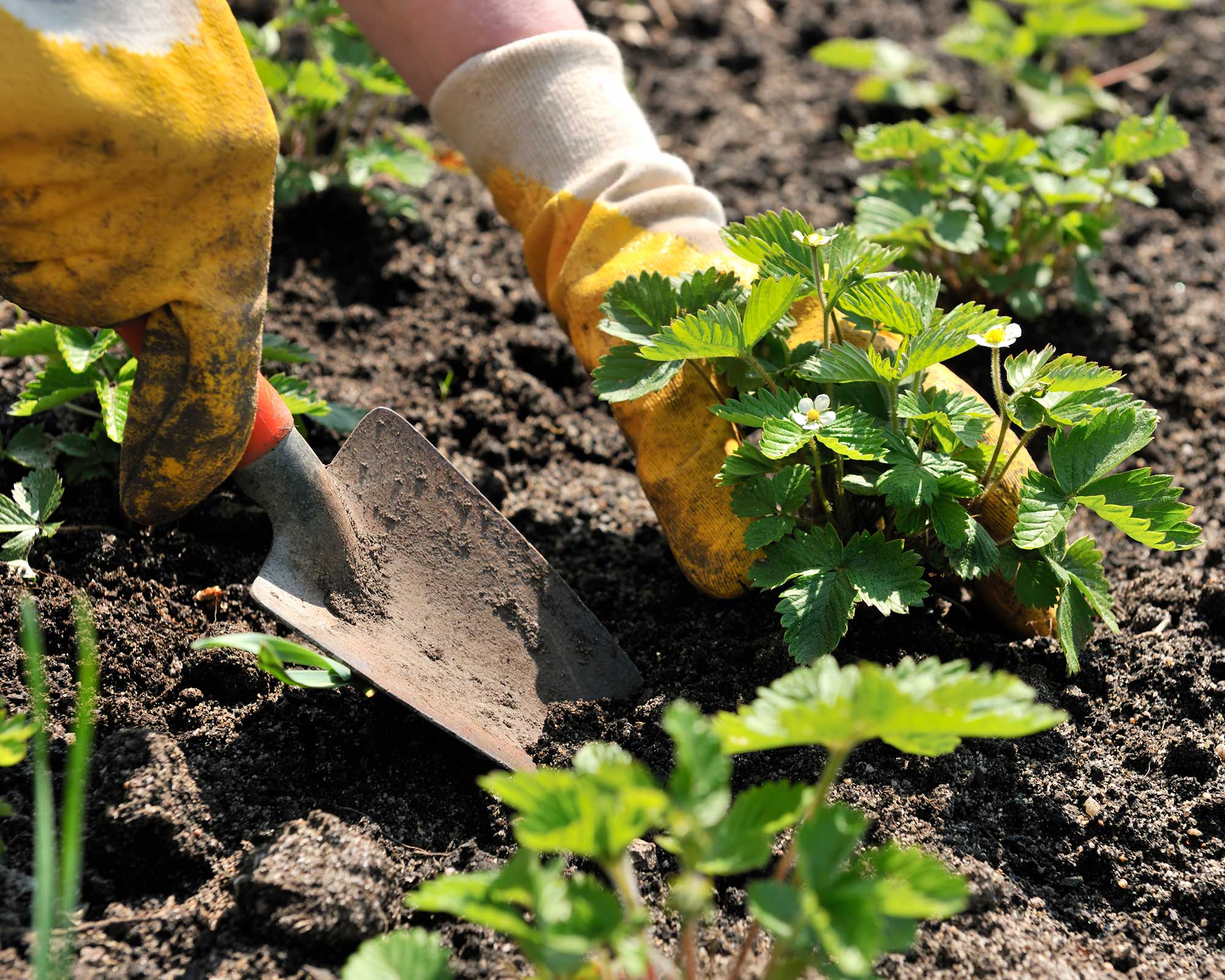
How to grow alpine strawberries
If you want to grow strawberries from seed, then the small, aromatic alpine varieties are the best option. The RHS says to sow them thinly in fall or spring on fine, firmed compost, then lightly cover them with sharp sand. Cover with a clear plastic bag to encourage germination, then prick out and pot on when they are big enough to handle. Plant them outdoors in early summer.
They're good for shade gardens, will tolerate cooler temperatures than other types of strawberries, and are generally low-maintenance.
Ideally, feed your alpine strawberries in spring when the soil is warming up, as suggests John Negus, gardening expert of Amateur Gardening. Continue to do so monthly until late summer, sprinkling it over the root area, and watering it in if the soil is dry.
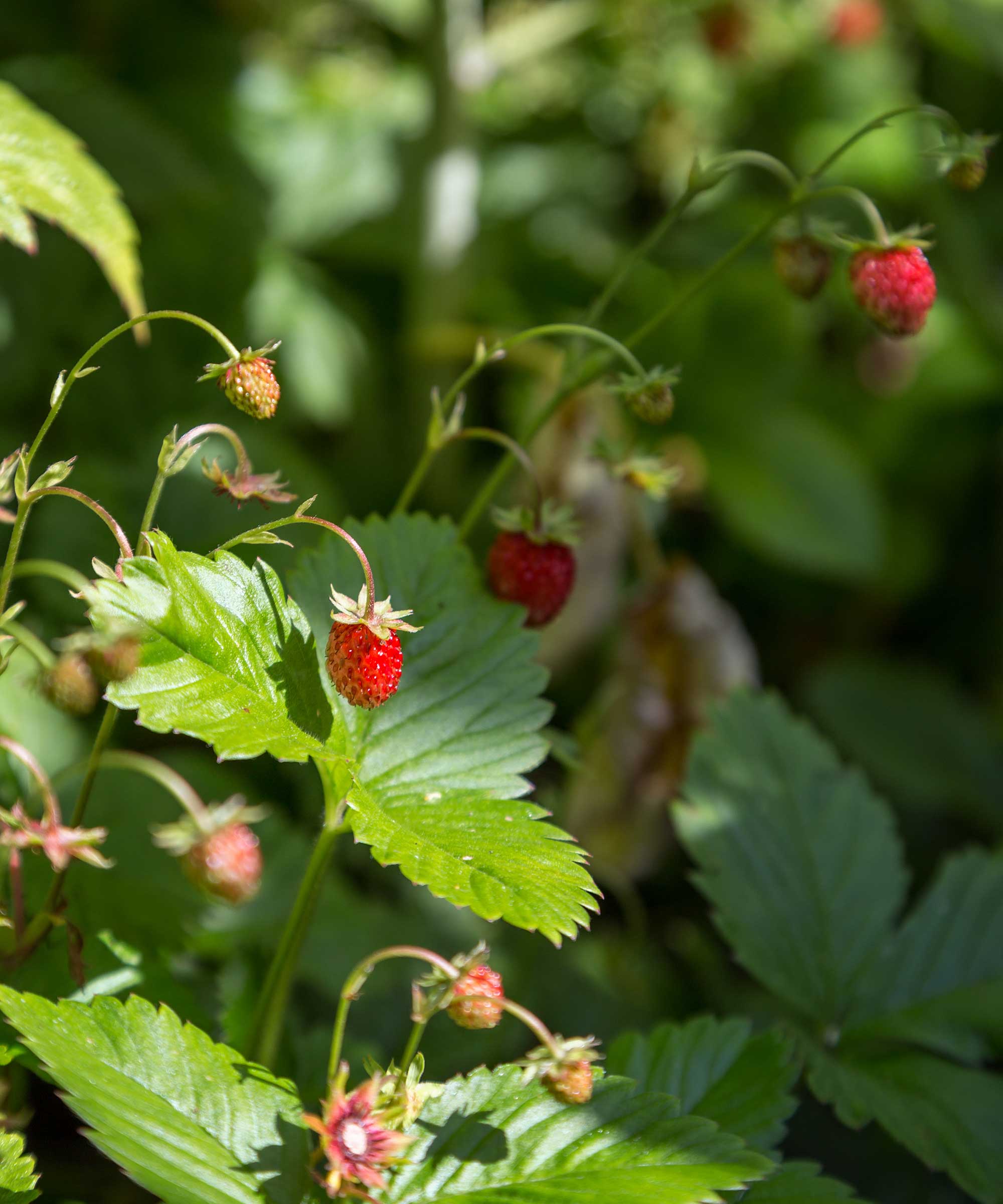
How to harvest strawberries
Strawberries will be ready to pick when they are bright red all over. Depending on the varieties you have planted, this tends to be in late summer to early fall. To harvest, simply pinch through the stalks with your finger and thumb to avoid bruising the fruit.
Picking them at the warmest part of the day will ensure they are at their tastiest, advises the RHS. They don't keep very well, so eat them as soon as possible after harvesting.
Why not learn how to grow blueberries too, to add to the fruity feast?
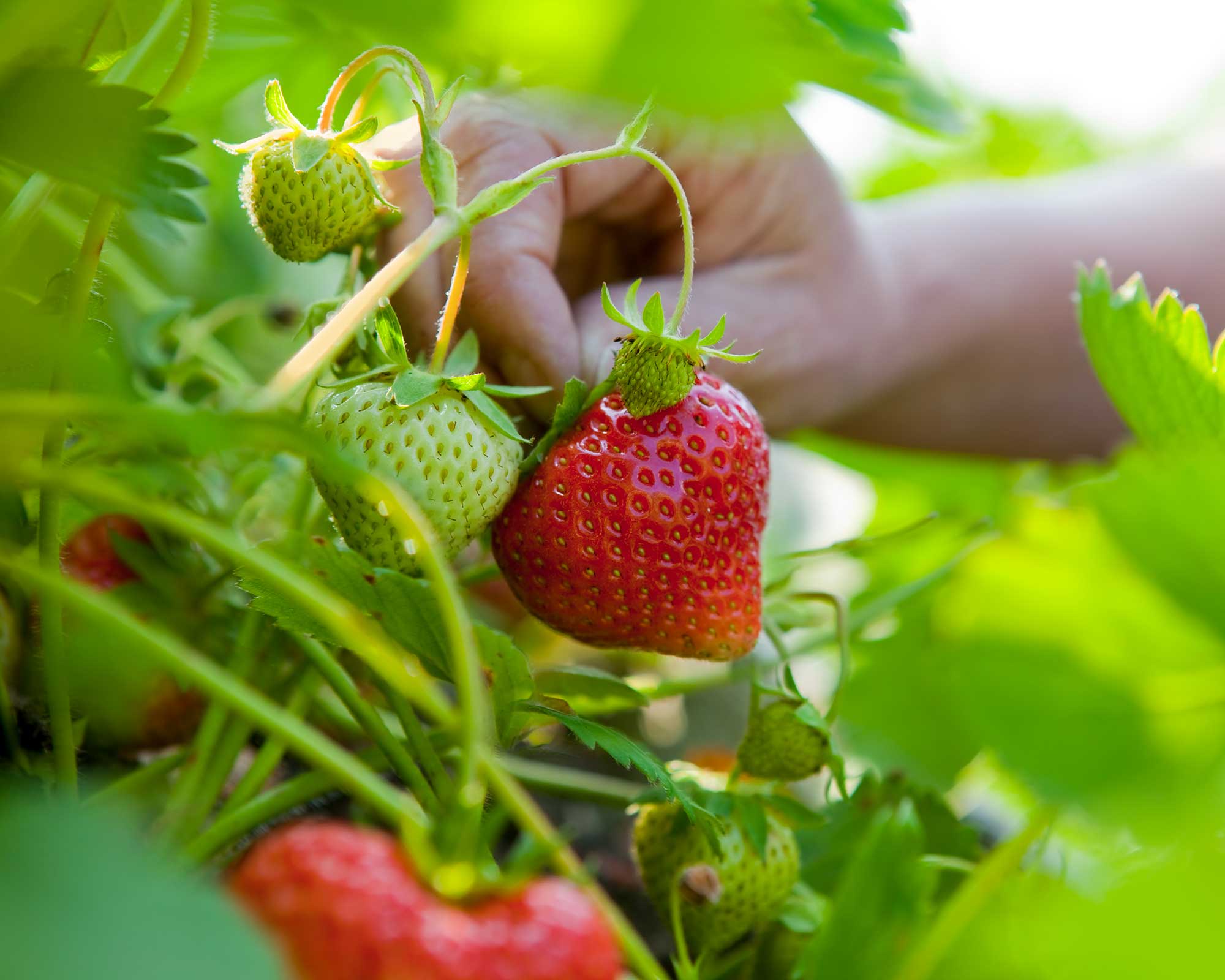
Common problems with growing strawberries and how to solve them
There are a few pests and diseases that can be problematic with strawberry care.
Slugs, snails, and birds are the most common pests that affect strawberries. Add grit to your mulch, plant lavender or rosemary nearby, or try our other tips on how to get rid of slugs if they're proving to be a pain.
To deter birds, try flash tape (which reflects the light), cover your plants with a net, or hang old CDs from string on canes.

Spots can occur on the leaves in fall, however, this is a common occurrence. 'Caused by a fungus that won't endanger your plants, the best treatment is to cut back all leaves and bin or burn the foliage,' says John. Feed the plants with bone meal to encourage robust root growth in spring. Then, from mid-spring to early fall, use fish, blood and bone meal as well as sulfate of potash to speed growth and encourage a good crop of fruit, he adds.
If you've spotted ripe fruits on your plants decaying, it could be due to overwatering. 'It’s important to cease watering when fruits are pink or red, as excess moisture can trigger an outbreak of gray mold (botrytis),' says the Amateur Gardening experts.
'If your strawberry fruits have started to split, heavy rain could be the culprit – or, again, it might be heavy watering,' they add. 'As mentioned above, it is best not to irrigate strawberries when fruits are ripening and turning red as they have a tendency to absorb too much moisture, causing tissues to expand and create fissures that are quickly colonized by fungal spores.'
There are a number of other viruses which can affect strawberries. The RHS recommends destroying and replacing plants as soon as yields start to fall, which is usually after two or three years. Remember to use certified 'virus-free' plants as replacements, and avoid planting them in the same spot.
Why do my strawberries have holes in the leaves?
If you've spotted holes in the leaves of your strawberries, and it doesn't appear to be slugs or snails, the culprits may be green capsid bugs. A tiny creature, the adults are bright green with brown markings.
'Eggs laid in autumn overwinter and hatch into yellow and green nymphs in spring,' explains the Amateur Gardening experts. 'They feed on the leaves causing the holes.'
Mature adults migrate to herbaceous plants where the females lay eggs in summer. A second generation matures and lays eggs in autumn. Tackle them with a pesticide, such as Py Bug Killer or Bug Clear Ultra, suggests the team.
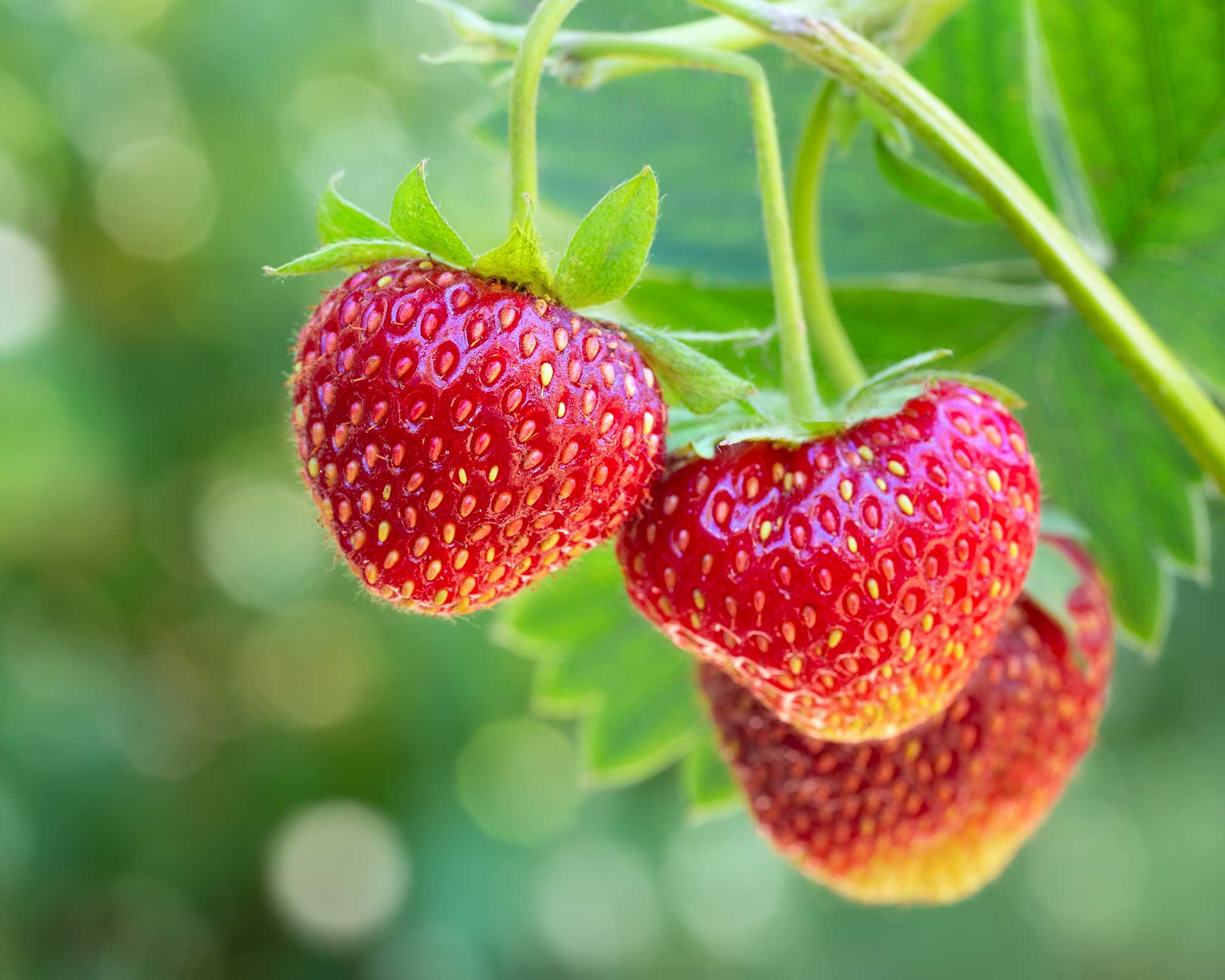
Why are my strawberry plants dropping their fruits before they are ripe?
'It is quite unusual for strawberry plants to drop their immature fruits,' says John. 'Are the plants dropping the fruits or are the fruit stems being nibbled, causing the fruits to drop?
'I'm not sure what creature might be doing this because most (mice, snails, and so on) are more likely to eat the fruit than cut the stems, but it is a possibility. You should be able to identify if this is the problem by close examination of the fruit and stem.'
The age of the plants may also be the reason. 'It is often best not to grow strawberry plants for more than three years when their productivity decreases,' John says. 'A combination of age and stress might result in the plants shedding their fruits to conserve energy.
'I would suggest ensuring that the plants are well fed by applying liquid tomato feed and general-purpose fertilizer in alternate weeks until the end of the growing season. It is also important to make sure the soil is moist at all times.'
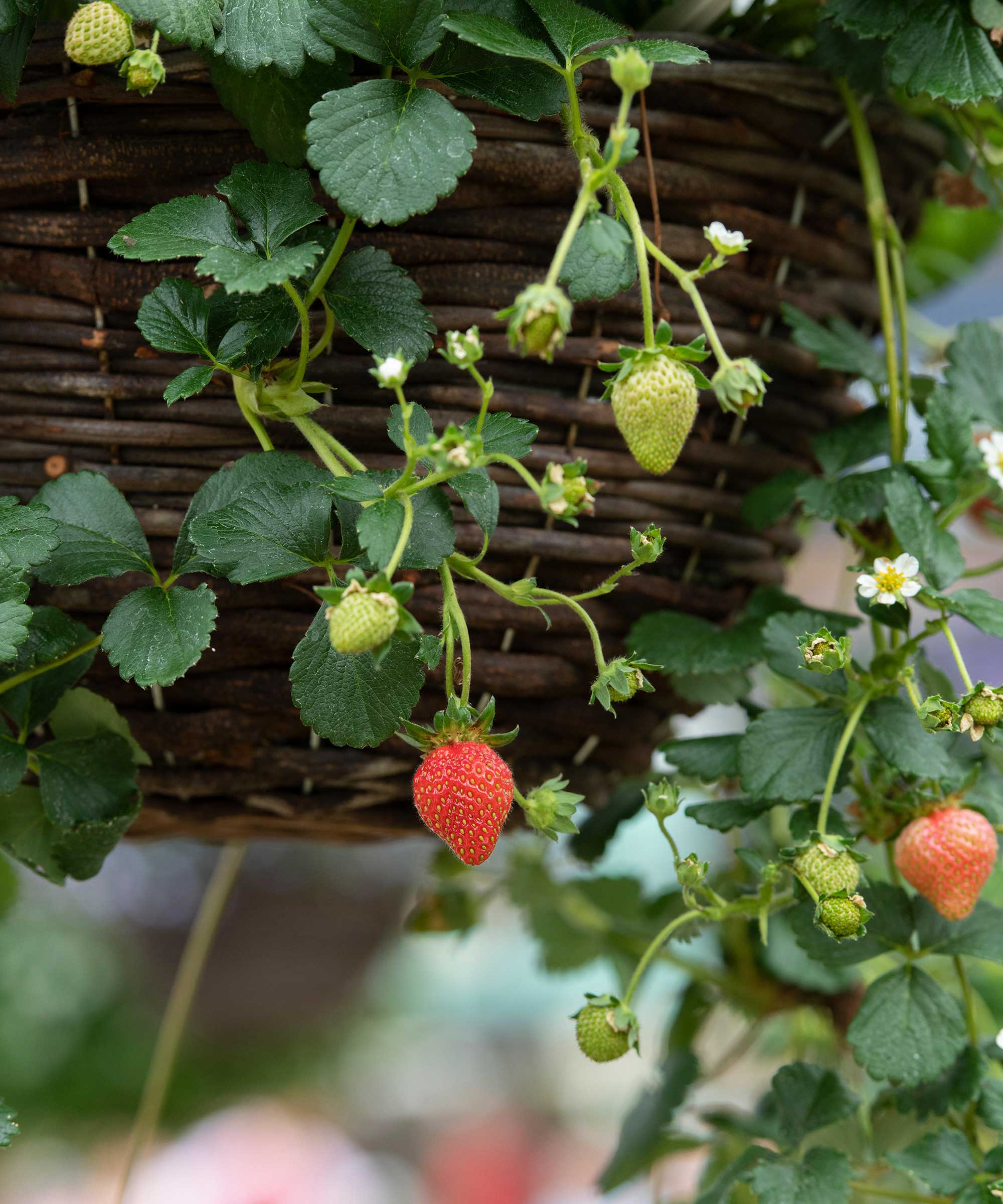
Can I grow strawberries where broad beans were growing?
'Your strawberries will do well in the soil where the broad beans were grown,' says John. 'Beans help to increase the fertility of the soil, which will benefit the strawberries.'
Where to buy strawberries
Learning how to grow strawberries is so rewarding that it's well worth having a go in your own backyard. These quicklinks will lead you to top plant suppliers.
Where to buy strawberry plants in the US:
Where to buy strawberry plants in the UK:
Laura has been writing about homes and gardens for 17 years. She joined Real Homes magazine in 2015 as Deputy Editor and then become Editor before taking on her current position as Content Director for brands including Country Homes & Interiors, 25 Beautiful Homes, Period Living and Style at Home. She's currently redesigning the garden of her 1960s home in Worcestershire and will eventually reinstate the swimming pool that's currently filled with mud! Outside of homes, she's a TV presenter for QVC.
- Holly CrossleyActing Deputy Editor

